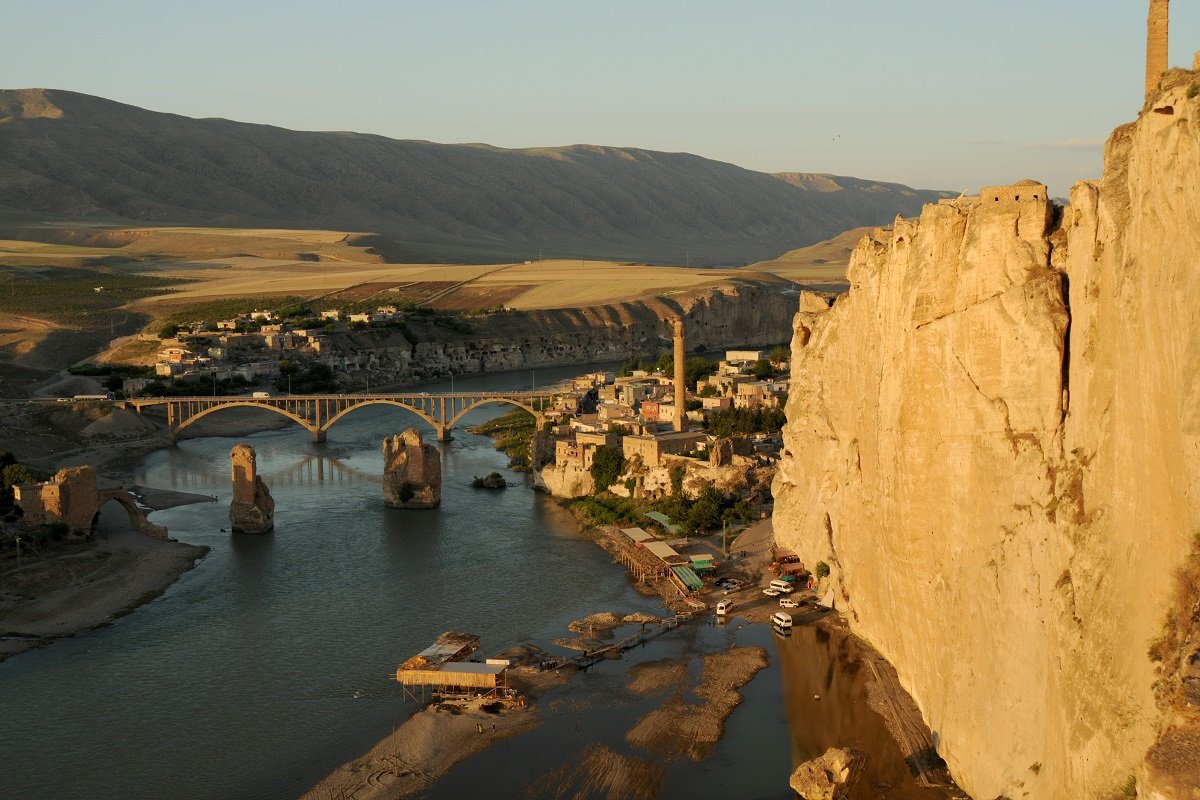
Demolotion of historical caves in antique town of Hasankeyf by Turkish government by using explosives has drew ire from people from all walks of life in Turkey. The Initiative to Keep Hasankeyf Alive has stated that cave-filling and bringing down of rocks ‘constituting danger’ is underway in the valleys on two sides of the castle.
It was reported by Turkish officials that as many as 210 caves will be filled, several other caves in canyons and valleys will also get flooded. Nearly 6 thousand caves around Hasankeyf are known as one of the first sites of human settlement. Civilized life in the town of Hasankeyf dates back to 8th century B.C. and the drawings inside the caves scattered around the town shed light on different periods, cultures and architectures of humanity.
The Initiative to Keep Hasankeyf Alive has also pointed out that the antique harbor to be built with concrete through an isolation of the natural history will not enliven tourism, but will only obliterate a history of thousands of years of human life with a project that is neither scientific nor abiding any laws for the protection of historical sights.
With its history and nature, Hasankeyf fulfills 9 of the 10 UNESCO criteria to be protected as human heritage. Hasankeyf also possesses one of the richest treasures of Islamic monuments. Sitting on the banks of the River Tigris, the antique town is one of the most important architectural and archaeological sites of the world, boasting a rich biodiversity and 12,000 years of human history. Masterpieces of Islamic architecture, dating from the 12th to 15th centuries C.E., make the town one of the best preserved witnesses to Seljuk urban culture, particularly from the Artukid and Ayyubid dynasties.
A small town with a great heritage, Hasankeyf already attracts about 500.000 visitors each year, a number expected to rise. Given its historical, architectural and economic significance for the region, public opinion supports its preservation. The area was declared a First Degree Archaeological Site by Turkey’s Supreme Board of Monuments in 1978 and has been under the protection of the Culture Ministry’s General Directorate of Antiquities and Museums since 1981.
The urgent threat to Hasankeyf is posed by the Ilısu dam hydroelectric power project which, if implemented as planned, would submerge the site under 65 meters of water by 2018. Ilısu Dam, which is under construction would create, if completed and implemented as planned, a social, cultural and ecological disaster in the region, impacting not only Turkey but the Tigris basin in Iran and Iraq as well.
The local population and Turkish as well as international environmental and human rights groups vehemently reject the project, which will lead to serious human rights violations. To make way for the dam, a small number of ancient monuments will be relocated outside the planned dam reservoir close to new settlement called “New-Hasankeyf.”
















[…] http://stockholmcf.org/turkish-govt-demolishes-12000-year-old-human-heritage-in-antique-hasankeyf-t… […]
[…] http://stockholmcf.org/turkish-govt-demolishes-12000-year-old-human-heritage-in-antique-hasankeyf-t… […]
[…] Turkish gov’t demolishes 12,000-years-old human heritage in antique Hasankeyf town […]